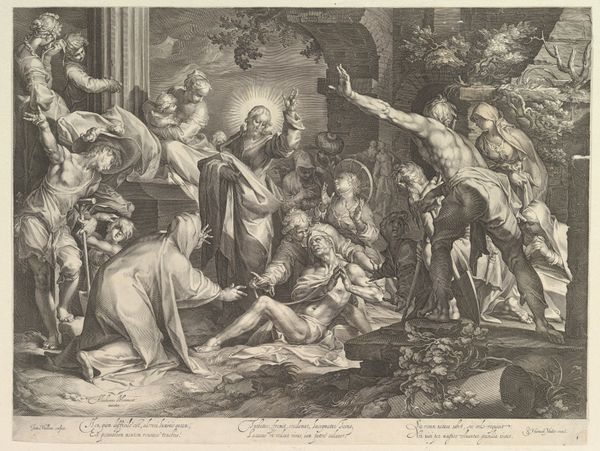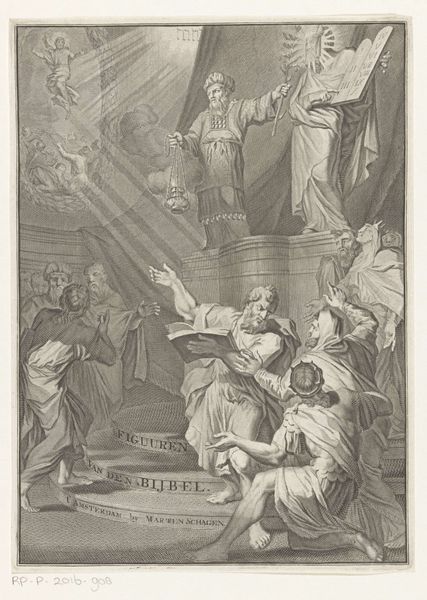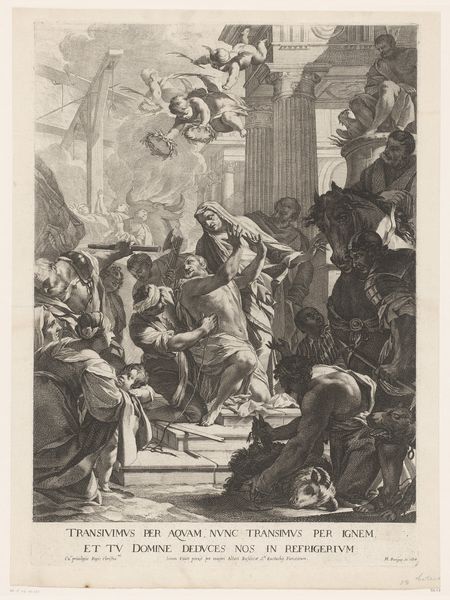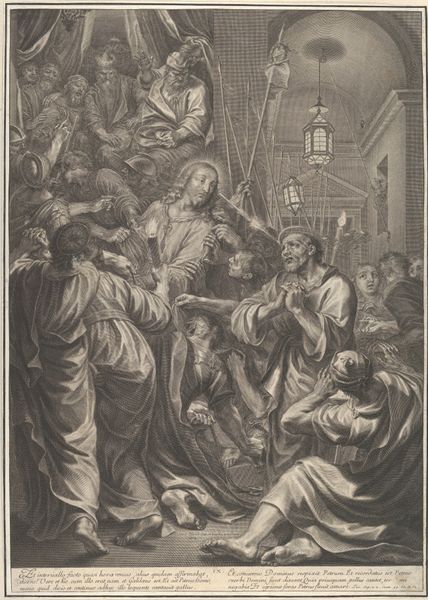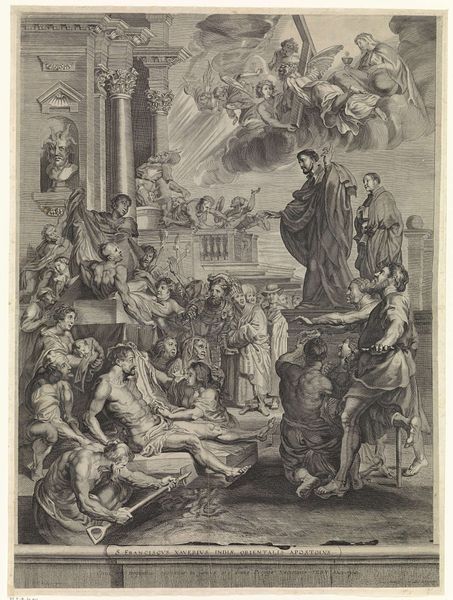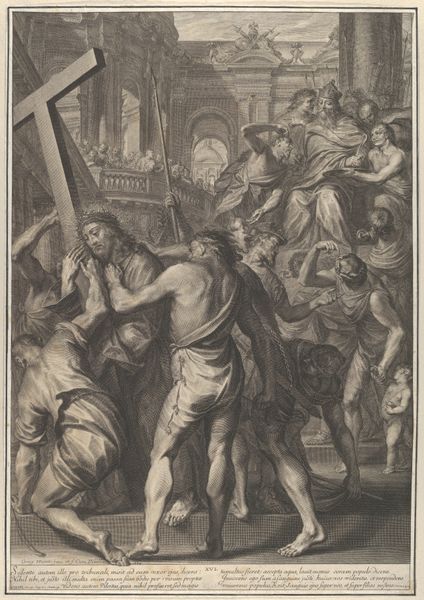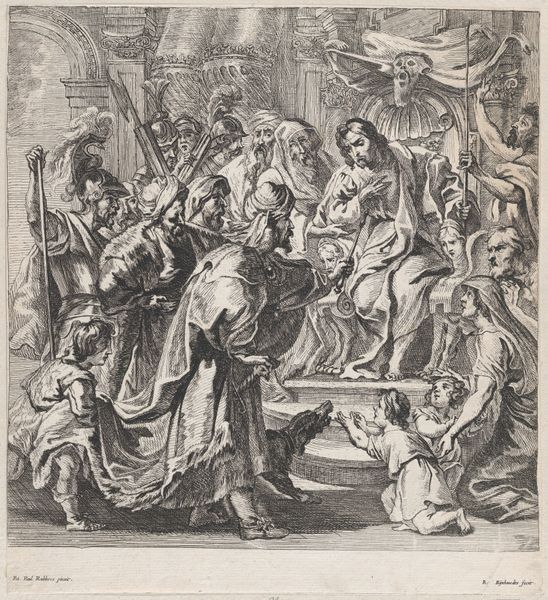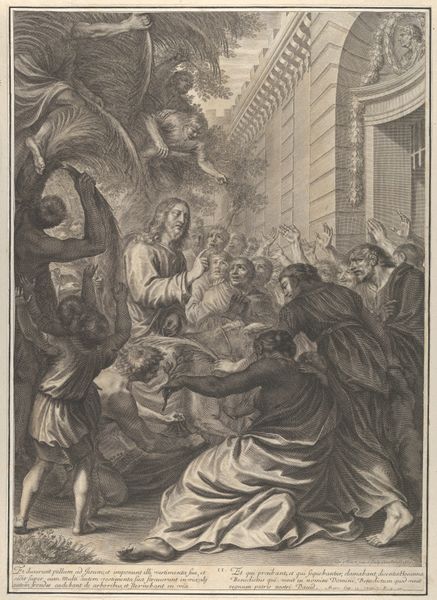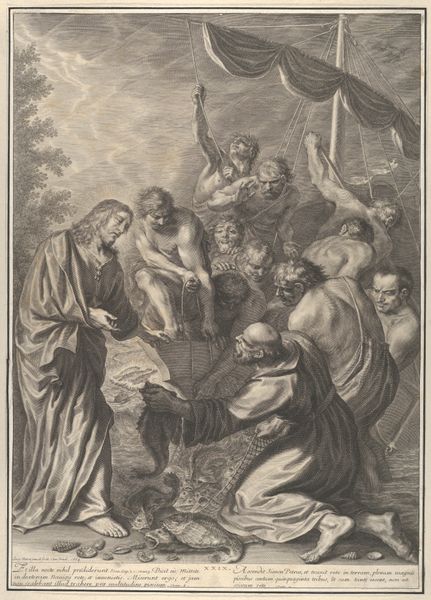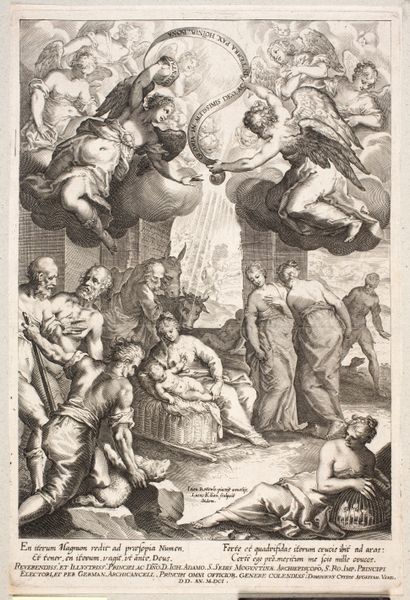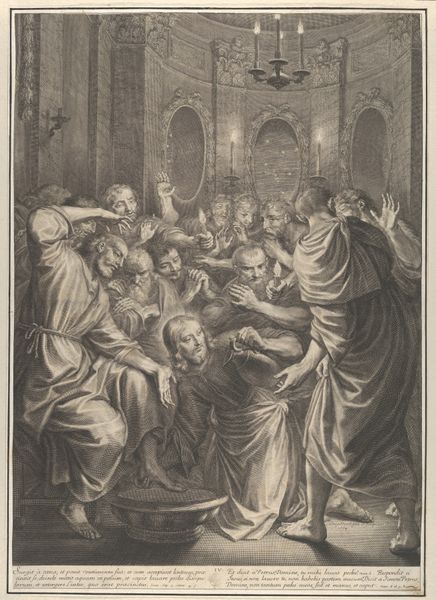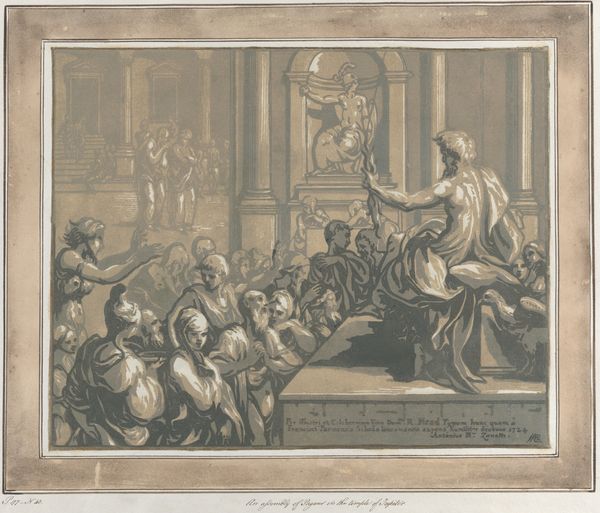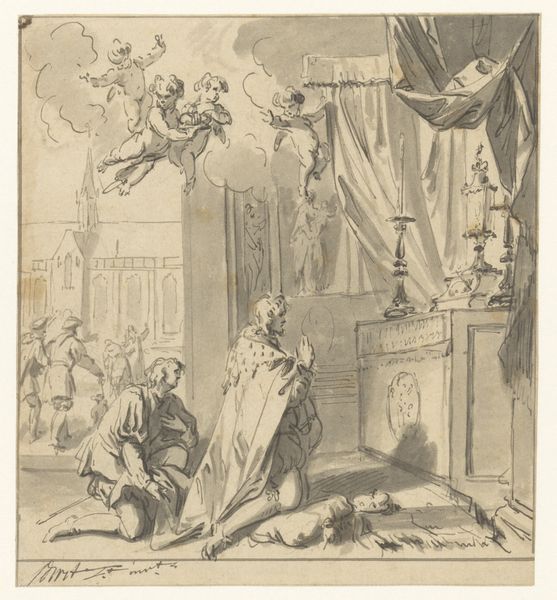
drawing, print, engraving
#
drawing
#
narrative-art
#
baroque
# print
#
figuration
#
history-painting
#
engraving
Dimensions: Sheet: 22 13/16 × 18 7/8 in. (58 × 48 cm) Plate: 22 13/16 × 18 7/8 in. (58 × 48 cm)
Copyright: Public Domain
Curator: This engraving, made by Henri Simon Thomassin in 1724, depicts a pivotal biblical scene. The piece, titled "The Magnificat," showcases Thomassin’s mastery of the Baroque style. Editor: Oh, the light in this artwork—it's almost ethereal. Look how the engraver plays with light and shadow, it gives the whole scene a mystical aura, doesn’t it? A drama of the soul, right there. Curator: Indeed. The use of light, or the contrast thereof, emphasizes the divine revelation occurring within the scene, while simultaneously creating strong emotional resonances with Baroque aesthetics. Note the structural emphasis of the figures positioned both above and below a kind of terraced platform. Editor: Platform’s a good word. It's like a stage! And Mary is at the center, almost lifted by the energy of those angels above and comforted by the community gathered around her. The angels floating above, though—are they bearing witness or actively participating? Curator: Both, I would posit. The angel figures both witness the holy moment and structurally echo the figures present in the foreground, connecting the earthly to the divine realms within the composition. The engraver here shows an interesting narrative technique for history painting: note how many stories seem to appear all at once. Editor: It feels busy but also intimate. Look at the details: a donkey off to the side, people looking concerned, some even weeping. You almost hear a whisper of secrets and hope interwoven. This feels deeply human. It almost brings me back to memories of my youth... it is all rather evocative. Curator: The brilliance of Thomassin here is that he achieves a powerful sense of scale in two dimensions by the sharp attention paid to detailed execution in what would normally feel, in other hands, crowded or confused. The architecture almost recedes completely into a secondary formal consideration, directing focus on to Mary and her immediate community. Editor: You're right, he certainly creates something transcendent out of everyday scenes! All in all, this really reminds me how artists through time make the invisible, visible... even when working in grayscale. Curator: Yes, Thomassin provides a sophisticated study in pictorial structure but also achieves the emotional demands of figuration. Editor: It's a wonderful paradox of faith, expertly presented.
Comments
No comments
Be the first to comment and join the conversation on the ultimate creative platform.
